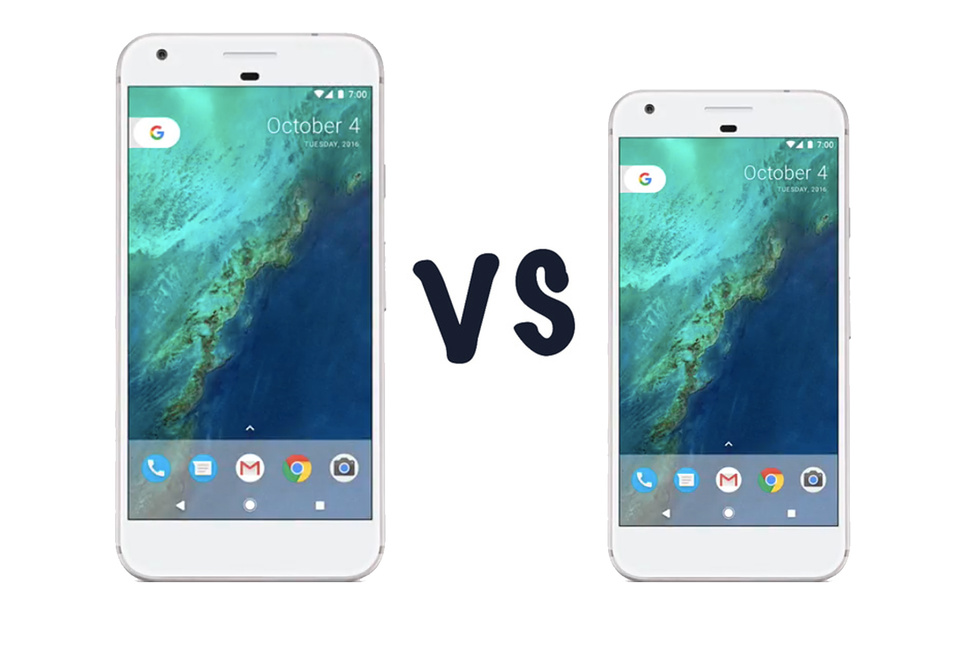What should you know about Google Pixel and Pixel XL?
- By
- October 6, 2016
 Google’s Nexus programme generated one or two pure Android smartphones from year to year. Nexus always tended to display Android in its purest form, away from the poking and prodding of manufacturer skins. A remarkable fact is that Nexus was a chance for Google to say “this is what Android is”.
Google’s Nexus programme generated one or two pure Android smartphones from year to year. Nexus always tended to display Android in its purest form, away from the poking and prodding of manufacturer skins. A remarkable fact is that Nexus was a chance for Google to say “this is what Android is”.
But you will be undoubtedly astonished by the changes this year brings. The biggest change is a considerable shift from the Nexus programme entirely and into Pixel. The news is clear from the Pixel launch: in 2016, it’s all about being “Made By Google.”
So, let’s talk a bit about the Pixel and Pixel XL smartphones.
Google Pixel: Manufacturer
Things have been changed by Google up for 2016. There is no doubt that Google hasn’t just built a factory that assembles smartphones. It was said earlier that Google was looking to be involved in the hardware design, as well as software, making the smartphone manufacturer more of a contractor than a partner, which has finally happened.
Google Pixel and Pixel XL: Design
The Pixel is the smaller of the two devices, and the Pixel XL is the larger, judging by its name. The Pixel measures 143.8 x 69.5 x 8.6mm and weighs 143g, while the Pixel XL measures 154.7 x 75.7 x 8.6mm and weighs 168g.
Both devices are analogous to each other if to talk about design. Generally, they are metal build with a glass panel for the top third of the rear. Within this panel is a centralized, circular fingerprint sensor, while the rear camera and flash sit flush in the top left corner.
There’s a chamfer at the front edges, similar to what you’ll find on the HTC 10. Speakers are positioned at the bottom of the devices, either side of the USB Type-C charging port. The power button and volume rocker are both on the right-hand side of the device but that’s it when it comes to physical buttons.
The front of both handsets sees just a speaker at the top, with a sensor below and a front camera in the top on the left. The Pixel and Pixel XL will be available in Quite Black, Very Silver and Really Blue color options.
Google Pixel and Pixel XL: Display
As it was mentioned earlier, the Pixel is the smaller of the two new devices, offering a 5-inch AMOLED display. It has a Full HD resolution with a pixel density of 441ppi and it has Corning Gorilla Glass 4 protection.
The Google Pixel XL has a Quad HD resolution across its 5.5-inch display, meaning a slightly higher pixel density of 534ppi. It is protected by Corning Gorilla Glass 4 and it also offers AMOLED technology.
The AMOLED technology should mean we can expect rich and vibrant colors from the Pixel and Pixel XL.
Google Pixel and Pixel XL: Camera
The Google Pixel and Pixel XL both can be characterized by a 12.3-megapixel rear camera with a f/2.0 aperture and 1.55µm pixels, like last year’s Nexus 6P. The front of both devices also sees an 8-megapixel camera, again like the Nexus 6P.
In terms of features, there is optical image stabilization on board, along with video image stabilization and something called Smartburst, which is considered to be great for capturing action shots.
Besides, the Pixel and Pixel XL camera will also use a feature called HDR+ by default. Thus clear and vivid results will be produced even in challenging conditions by minimizing noise and extending dynamic range, by fusing multiple shots together.
Google Pixel and Pixel XL: Software
The Pixels arrive with the next version of Android from the box, called Android Nougat. Although this was released recently, the Pixels are running an updated version with 7.1.
There is a new launcher and all the apps are now round like the Chrome app. The Pixels are the first phones to feature Google Assistant built-in and they are also the first Daydream-ready phones.
Interesting posts
The Growing Demand for IT Certifications in the Fintech Industry
The fintech industry is experiencing an unprecedented boom, driven by the relentless pace of technological innovation and the increasing integration of financial services with digital platforms. As the lines between finance and technology blur, the need for highly skilled professionals who can navigate both worlds is greater than ever. One of the most effective ways… Read More »
CompTIA Security+ vs. CEH: Entry-Level Cybersecurity Certifications Compared
In today’s digital world, cybersecurity is no longer just a technical concern; it’s a critical business priority. With cyber threats evolving rapidly, organizations of all sizes are seeking skilled professionals to protect their digital assets. For those looking to break into the cybersecurity field, earning a certification is a great way to validate your skills… Read More »
The Evolving Role of ITIL: What’s New in ITIL 4 Managing Professional Transition Exam?
If you’ve been in the IT service management (ITSM) world for a while, you’ve probably heard of ITIL – the framework that’s been guiding IT professionals in delivering high-quality services for decades. The Information Technology Infrastructure Library (ITIL) has evolved significantly over the years, and its latest iteration, ITIL 4, marks a substantial shift in… Read More »
SASE and Zero Trust: How New Security Architectures are Shaping Cisco’s CyberOps Certification
As cybersecurity threats become increasingly sophisticated and pervasive, traditional security models are proving inadequate for today’s complex digital environments. To address these challenges, modern security frameworks such as SASE (Secure Access Service Edge) and Zero Trust are revolutionizing how organizations protect their networks and data. Recognizing the shift towards these advanced security architectures, Cisco has… Read More »
CompTIA’s CASP+ (CAS-004) Gets Tougher: What’s New in Advanced Security Practitioner Certification?
The cybersecurity landscape is constantly evolving, and with it, the certifications that validate the expertise of security professionals must adapt to address new challenges and technologies. CompTIA’s CASP+ (CompTIA Advanced Security Practitioner) certification has long been a hallmark of advanced knowledge in cybersecurity, distinguishing those who are capable of designing, implementing, and managing enterprise-level security… Read More »
Azure DevOps Engineer Expert Certification: What’s Changed in the New AZ-400 Exam Blueprint?
The cloud landscape is evolving at a breakneck pace, and with it, the certifications that validate an IT professional’s skills. One such certification is the Microsoft Certified: DevOps Engineer Expert, which is validated through the AZ-400 exam. This exam has undergone significant changes to reflect the latest trends, tools, and methodologies in the DevOps world.… Read More »


